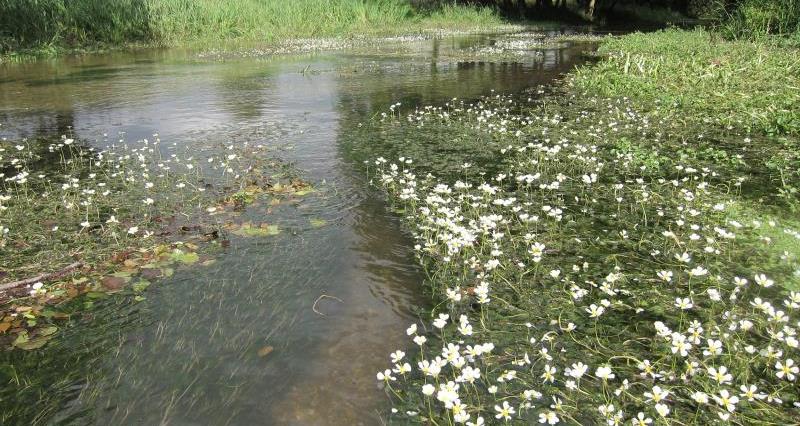The agricultural industry and rural communities in general face some significant water quality challenges arising from legislation such as the European Water Framework Directive and various nitrates regulations.
The establishment of Safeguard Zones and Drinking Water Protected Areas is another initiative designed to improve water quality. The challenge here is to reduce the incidence of pesticides and nutrients in the water entering Water Company treatment works as this is placing a strain on the treatment process.
To find out if your farm is within one of the established zones consult Environment Agency maps here. The maps will be updated in the coming months.
Ongoing data on the levels of pesticides being found in regional watercourses will now be found below for Yorkshire Water and Northumbrian Water . Practical advice on how to tackle levels of metaldehyde found in watercourses can be found on the Get Pelletwise website.
Defra is currently working with the Drinking Water Inspectorate, and Environment Agency on proposals for future metaldehyde control in time to allow planning for AMP7. Drawing on discussions with stakeholders to date, these will include regulatory options but will also leave space for additional catchment management work. The deadline for water companies to report on the progress of measures to stop metaldehyde breaching limits has been brought forward to March 2017.
Yorkshire Water have published their Metaldehyde High Risk Sub-catchment maps that include the River Wiske tributaries, Hurns Gutter catchment, River Kyle catchment, Braisthwaite Beck, Blackfoss Beck, Bielby Beck.
Northumbrian Water have published their Metaldehyde High Risk Sub-catchment maps that include the Thirston Burn and Tyelaw Burn in the River Coquet Catchment.
Chiltern Project - help to keep metaldehyde in the farmers arsenal
Northumbrian Water and Chiltern Farm Chemicals Ltd have been working together to trial the use of Chiltern’s low dose rate metaldehyde pellets in a sub-catchment of the River Coquet in Northumberland.This is one of four catchments being looked at across the country. Farmers and their agronomists in the Thirston Burn catchment were asked to only use 1.5% metaldehyde pellets (Allure, Appeal, Attract, Desire, Tempt or Trounce) and if a second application was needed to switch to a ferric phosphate pellet. It is hoped that using this lower dose rate will reduce the levels of metaldehyde being found in watercourses and help to ensure that Northumbrian Water meets its legal obligation regards pesticides in water, which should in turn help to keep metaldehyde in the farmers arsenal.We received a really good response from everyone we spoke to and are confident we reached all of the farmers, either directly or through their agronomists.We are now taking water samples weekly at several points across the catchment and will report on these results as they are collected.
It is worth pointing out that on the 16th September we did have a slightly elevated level of metaldehyde in the Eshott Burn (a tributary of the Thirston Burn) of 0.14ug/l, i.e. just above the 0.1ug/l drinking water standard, although thankfully we didn’t pick anything up further downstream.This result followed a couple of moderate rain showers , just under 2mm in an hour, around lunchtime on 15th and then again in the early hours of 16th, perhaps highlighting the MSG message to avoid pelleting when rain is forecast.
The next step will be to follow up with farmers towards the end of the year to determine what products were used and what impact that had on the water quality.The results of this will be shared in due course.
Yorkshire Water Results
Results up to April 2020
Results up to March 2020
Results up to February 2020
Results up to January 2020
Results up to November 2019
Results up to September 2019
Results up to August 2019
Results up to April 2019
Results up to March 2019
Results up to February 2019
Results up to January 2019
Results up to November 2018
Results up to the end of September 2018
Results up to September 2018
Results up to August 2018
Results up to October 2017
Results up to July 2017
Results up to March 2017
Results up to January 2017
Results up to December 2016
Results up to November 2016
Results up to October 2016
Results up to September 2016
Results up to August 2016
Results up to July 2016
Results up to the end of June 2016
Results up to the end of May 2016
Results up to May 2016
Results up to March 2016
Results up to February 2016
Results up to January 2016
Northumbrian Water Results
Results up to September 2016
Results up to December 2015
Latest results up to the end of November 2015
Latest results up to end of October 2015
Latest Results up to the end of September 2015
Latest results up to the end of March
Results up to the end of November
Results up to the end of October
Results up to the end of September
Results up to the end of August
